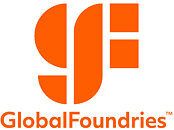STMicroelectronics Enhances Optical Interconnects for Faster AI and Cloud Datacenters
STMicroelectronics, a global semiconductor leader serving customers across the spectrum of electronics applications, is unveiling its next generation of proprietary technologies for higher-performing optical interconnect in datacenters and AI clusters. With the exponential growth of AI computing needs, challenges arise in performance and energy efficiency across computing, memory, power supply, and the interconnections linking them. ST is helping hyperscalers, and the leading optical module provider, overcome those challenges with new silicon photonics and next-gen BiCMOS technologies, scheduled to ramp up from the second half of 2025 for 800 Gb/s and 1.6 Tb/s optical modules.
At the heart of interconnections in a datacenter are thousands, or even hundreds of thousands, of optical transceivers. These devices convert optical into electrical signals and vice versa to allow data flow between graphics processing unit (GPU) computing resources, switches and storage. Inside these transceivers, ST's new, proprietary silicon photonics (SiPho) technology will bring customers the ability to integrate multiple complex components into one single chip, while ST's next-gen, proprietary BiCMOS technology brings ultra high-speed and low power optical connectivity, which are key to sustain the AI growth.
At the heart of interconnections in a datacenter are thousands, or even hundreds of thousands, of optical transceivers. These devices convert optical into electrical signals and vice versa to allow data flow between graphics processing unit (GPU) computing resources, switches and storage. Inside these transceivers, ST's new, proprietary silicon photonics (SiPho) technology will bring customers the ability to integrate multiple complex components into one single chip, while ST's next-gen, proprietary BiCMOS technology brings ultra high-speed and low power optical connectivity, which are key to sustain the AI growth.





























